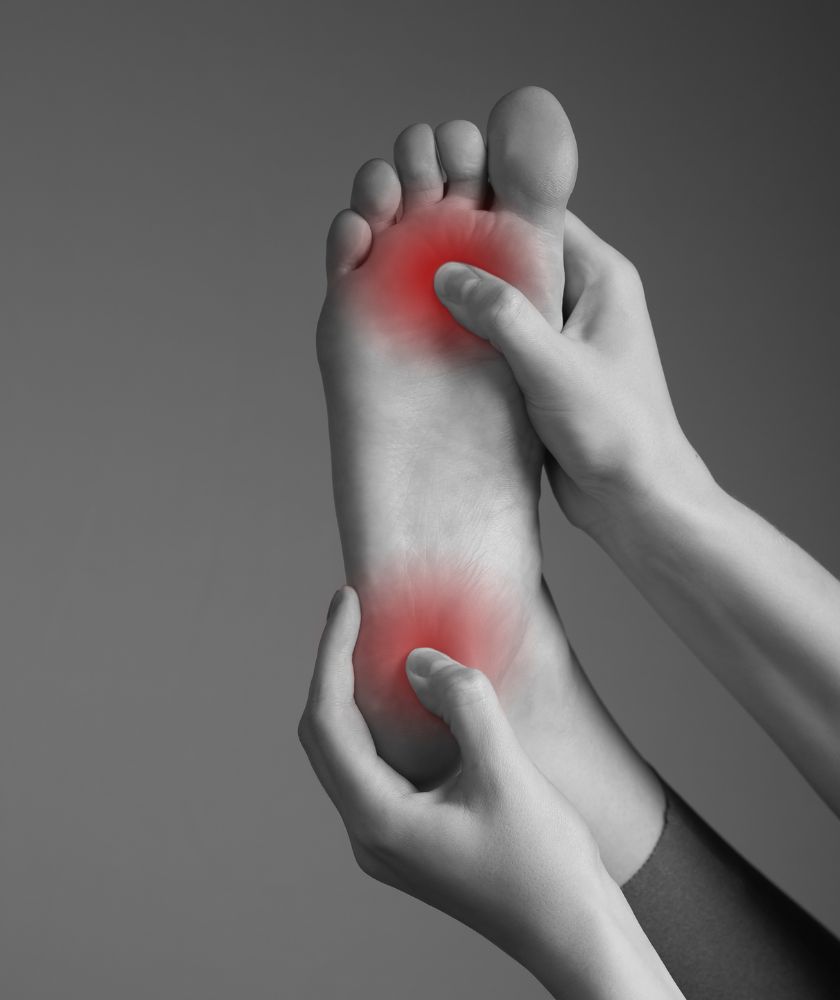Plantar Fasciitis
Conquer Achilles Tendonitis

About Plantar Fasciitis
Plantar fasciitis is a common and often painful foot condition characterized by inflammation of the plantar fascia, a thick band of tissue that connects the heel bone to the toes. This condition typically manifests as sharp or stabbing pain in the heel, particularly upon the first steps in the morning or after prolonged periods of rest. It is commonly associated with activities that place excess strain on the feet, such as prolonged standing, running, or wearing ill-fitting shoes. The plantar fascia acts as a shock absorber and supports the arch of the foot. When subjected to excessive stress or tension, small tears can develop in the fascia, leading to inflammation and discomfort. Risk factors for plantar fasciitis include obesity, high arches, flat feet, and certain occupations that require prolonged periods of standing. Fortunately, conservative treatments like rest, stretching exercises, orthotic inserts, and physical therapy are often effective in alleviating symptoms and promoting healing. In more severe cases, medical interventions such as corticosteroid injections or surgical options may be considered. Early diagnosis and appropriate management are key to managing plantar fasciitis and preventing it from becoming a chronic condition.
More about Plantar Fasciitis
Plantar fasciitis is a prevalent foot condition that affects millions of people worldwide. It primarily stems from the overuse or excessive strain on the plantar fascia, a thick band of tissue that runs along the bottom of the foot, connecting the heel bone to the toes. This condition commonly afflicts individuals who engage in activities that place repetitive stress on the foot, such as running, dancing, or standing for extended periods. The hallmark symptom is a sharp, stabbing pain in the heel, particularly experienced during the first steps in the morning or after prolonged periods of rest. It can also be triggered by activities after a period of inactivity.
Risk factors for developing plantar fasciitis include obesity, as the extra weight places additional strain on the feet, as well as having high arches or flat feet, which can alter the distribution of weight and pressure on the plantar fascia. Ill-fitting shoes that do not provide adequate support or have poor arch support can also contribute to the development of this condition.
Treatment options for plantar fasciitis aim to alleviate pain, reduce inflammation, and promote healing. Common approaches include custom foot orthotics rest, ice, and elevation (RICE), along with stretching and strengthening exercises targeting the calf muscles and Achilles tendon. Custom-made orthotic inserts and supportive footwear can provide crucial support and help distribute pressure more evenly across the foot. Physical therapy may be recommended to improve flexibility and strengthen the surrounding muscles.
In more severe cases, medical interventions may be considered. This can include corticosteroid injections to reduce inflammation, extracorporeal shockwave therapy to stimulate healing, or in rare instances, surgery to release tension in the plantar fascia.
It’s important to note that early intervention and consistent adherence to treatment plans can significantly improve outcomes for individuals with plantar fasciitis. With the right combination of therapies, many people can regain full mobility and return to their regular activities without debilitating foot pain.
